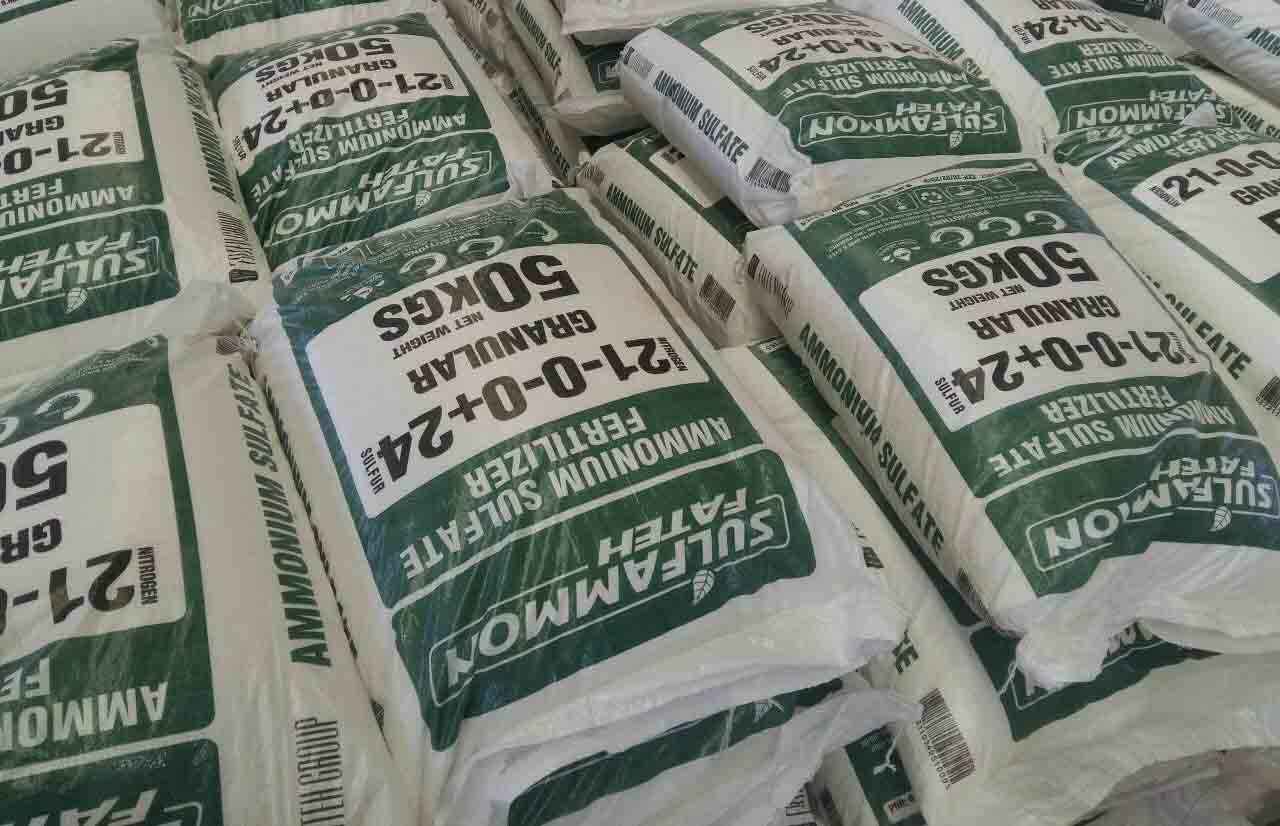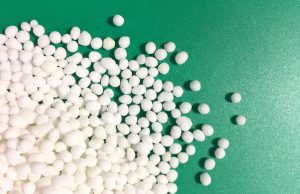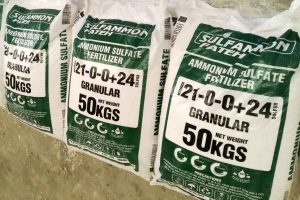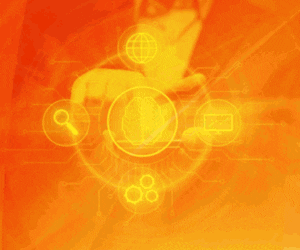Ammonium Sulfate; Features and applications

What is ammonium sulfate?
Ammonium sulfate is a mineral salt. This mineral composition has many uses in different industries.
A significant percentage of this substance is used to prepare ammonium fertilizers and nitrogenous fertilizers. These agricultural fertilizers generally contain 21% nitrogen and 24% sulfur.
If you have heard the name of nitrogen (N) fertilizers for the production of crops, it refers to this ammonium sulfate compound.
This material is one of the first and most widely used nitrogen fertilizer, but currently it is less used! But if there is a special need for fertilizers containing N and sulfur or (S), this mineral composition will be very valuable. Its high solubility has made it used for many agricultural applications.
In the following article, you will see that this substance is used in other applications besides agriculture.
Ammonium sulfate is usually added to bread food products as a dough softener. This substance is also present in the basic components of fire extinguisher powder and fire retardant materials.
Chemical industries, wood pulp, textiles and pharmaceuticals are other uses of this sulfate salt. We will talk more about this later.
Contents
A look at the History of Ammonium Sulfate
This substance is naturally formed in the form of a rare mineral called maskagenite in volcanic vapors and as a result of burning coal in its remains.
Ammonium Sulfate Production Methods
The chemical compound is prepared by treating ammonia, often as a by-product of coke ovens, in the presence of sulfuric acid; you can see this equation in the following section:
2NH 3+ H2SO 4 (NH4) 2SO4
A mixture of ammonia gas and water vapor enters a reactor; the reactor contains a saturated solution of ammonium sulfate and about 2 to 4% of free sulfuric acid at a temperature of 60 degrees Celsius.
Concentrated sulfuric acid is added to adjust the acidic environment of the solution and maintain the free acid level. The heat of reaction keeps the temperature of the reactor constant at 60 degrees Celsius.
Dry and powdered ammonium sulfate is formed by spraying sulfuric acid in a reaction chamber filled with ammonia gas. The heat of the reaction evaporates all the water in the system and forms a powdered salt.
This material is also produced from gypsum with the chemical formula CaSO4.2H2O. Gypsum is crushed into very small pieces and added to the ammonium carbonate solution.
Calcium carbonate precipitates as a solid and leaves ammonium sulfate in solution. You can see this reaction in the following section:
(NH4) 2CO 3+ CaSO4 (NH4) 2SO 4+ CaCO3

Properties of ammonium sulfate
Structural features:
Ammonium sulfate is a salt of ammonia and sulfuric acid. Under standard temperature and pressure conditions, this compound forms fine white grains or crystal crystalline crystals. It does not dissolve in alcohol or liquid ammonia. It has little moisture absorption properties and absorbs water from the air in relative humidity above 81% (at 20°C).
Ammonium sulfate becomes ferroelectric at a temperature lower than -49.5 degrees Celsius. At room temperature, it crystallizes in the orthorhombic structural system.
Reactions of ammonium sulfate:
This substance decomposes when heated at a temperature higher than 250 degrees Celsius. In this process, ammonium bi-sulfate is formed first. Heating at higher temperatures causes it to decompose into ammonia, nitrogen, sulfur dioxide, and water.
Ammonium sulfate solution is acidic as a salt of a strong acid (sulfuric acid) and a weak base (ammonia). A solution of 0.1 mm is equal to 5.5. In aqueous solutions, the reactions are related to ammonium and sulfate ions. For example, adding barium chloride produces barium sulfate as a precipitate.
When a solution of this substance is mixed with equal concentration solutions of metal sulfate and the solution is slowly evaporated, it produces various double salts (ammonium metal sulfates).
With trivalent metal ions, compounds such as ferric ammonium sulfate are formed.
Bimetallic sulfates include cobalt ammonium sulfate, iron diammonium sulfate, and nickel ammonium sulfate.
Physical and chemical characteristics
| Other names: Ammonium Sulfate Ammonium Sulfate (2:1) Diammonium Sulfate Sulfuric acid Diammonium salt Mascagnite Actamaster Dolamin | |
| Identifiers | |
| Cas Number | 7783-20-2 |
| EC Number | 231-984-1 |
| Pubchem CID | 6097028 |
| Features and Properties | |
| Chemical formula | (NH4)2SO4 |
| Molar mass | 132.14 g/mol |
| Appearance | White powder, white granules or white crystals with moisture absorption properties |
| Density | 1.77 g/cm3 |
| Melting point | 235 to 280 °C (455 to 536 °F; 508 to 553 K) |
| Solubility in water | 70.6 g in 100 g water (0 °C) 74.4 g in 100 g water (20 °C) 103.8 g in 100 g water (100 °C) |
| Solubility in other compounds | Insoluble in alcohol, ether, acetone |
| Flammability point | Not-flammable |
| Related compounds | |
| Other Anions | Ammonium thiosulfate Ammonium sulfite Ammonium bisulfate Ammonium persulfate |
| Other Cation | Sodium sulfate Potassium sulfate |
| Related Compounds | Ammonium iron(‖) sulfate |
ammonium sulphate uses
1- as agricultural fertilizer:
The first applications of this nitrogen fertilizer were known as fertilizers for alkaline soils. Ammonium ion is released in the soil and forms a small amount of acid, and in this condition it reduces the pH of the soil; while the essential urt is distributed for plant growth in the soil. The most important disadvantage of using this nitrogen in its low nitrogen content compared to ammonium nitrate fertlizers. The same property of this fertilizer is used for fruit trees.
It is also used as a spray regulator of water soluble insecticides, herbicides and fungicides for agriculture.
2- as a food additive:
As a food additive, this substance is generally recognized as a safe compound by the US food and drug administration and is introduced in the European Union under the number E517. The edible grade of this material is used as an acidity regulator in flour and bread.
3- application of ammonium sulfate in industry:
- In drinking water treatment, this preparation is used in combination with chlorine to produce monochloramine for disinfection.
- It is used on a small scale in the preparation of other ammonium salts, especially ammonium persulfate
- It is used as the main ingredient of many vaccines in the United States at the center for disease control.
- A saturated solution of this substance in heavy water (D2O) is used as an external standard in NMR spectroscopy for sulfur ().
- It has also been used in fire retardant compounds that act like Diammonium phosphate. As a flame retardant, this compound can increase the combustion temperature of the material.
- It has been used as a wood preservative, but due to its moisture absorption properties, it causes problems related to corrosion of metal joints and has been largely discontinued in these applications.
Tips for using ammonium sulfate fertilizer in agriculture:

This agricultural fertilizer is primarily used in cases where the need for plant nutrition supplements is felt, and they are necessary to meet the nutritional needs of growing plants.
Since this nitrate fertilizer only contains 21% nitrogen, there are other fertilizer sources that provide higher concentrations. This means that it can be affordable to buy and use.
This nitrogen fertilizer is often used for rice in flooded soils; where nitrate based fertilizers are not very effective.
The source water contains significant concentrations of calcium, magnesium or sodium. High purity ammonium sulfate is used for this purpose so that it does not block the irrigation nozzles.
After adding this chemical fertilizer to the soil, this fertilizer quickly dissolves and turns into its components, namely ammonium and sulfate. If you add it on the soil surface, ammonium may be prone to outgassing in alkaline conditions.
In this situation, it is better to integrate the materials in the soil as soon as possible. You can do this before watering so that the fertilizer can dissolve well and become available to the plant due to the moisture.
Most plants are able to use both ammonium and nitrate forms of N for growth. In warm soils, microbes start to work quickly.
The conversion of ammonium to nitrate occurs in the nitrification process. During this reaction, hydrogen ions are released, which eventually decreases the pH of the soil after repeated plant use of the nutrient source. Due to the nitrogenization process, this substance has an acidic effect on the soil.
Safety
Avoid contact with the eyes of the ammonium sulfate composition and in case of contact, immediately wash the eyes with plenty of water for at least 15 minutes. Use cold water as much as possible. Try to remove the eye lens quickly.
If this composition comes into contact with the skin, immediately wash the contact area with plenty of water. Cover the irritated skin with an antibacterial moisturizer or emollient. It is better to wash the place of contact with the skin antiseptic soap.
In case of inhalation of the dust of this substance, move the injured person to fresh air. In case of suffocation and severe symptoms of shortness of breath, be sure to take him to the emergency room. For this mineral composition, dangerous and acute respiratory effects have not been reported.
Possible acute health effects from repeated contact with this chemical compound have been introduced. This substance can irritate the skin and cause itching and inflammation.
If accidentally swallowed, this chemical can move water from the body to the intestines and act as a laxative.
If a sufficient amount of it is absorbed systemically by the body, it may cause ammonia poisoning. These symptoms include the digestive system. Irritation of the is accompanied by nausea and diarrhea.
It may also affect the eyes, central nervous system behavior (drowsiness, tremors, convulsions, muscle contraction) and respiratory system (respiratory stimulation, shortness of breath).
Packaging
Buying and selling of granular ammonium sulfate or powdered ammonium sulfate is done in bag packages with a weight of 50 kg.
If the manufacturing company offers other weights of this material, the bags are prepared at 25 kg or 1000 kg for industrial applications. shipping in bulk is also possible.

Maintenance
Bags containing ammonium sulfate compound should be stored in dry and cool warehouses, with strong ventilation and away from heat. Separate this material from flammable materials. Try not to breath the dust released from this compound.
Workers in warehouses where this substance is stored must use gloves, masks and special work clothes.
Bags or containers for storing this chemical must be marked with safety labels and technical specifications.
Avoid storing near incompatible materials such as oxidizers.
Keep containers and bags completely closed.
Market: Purchase and sale of ammonium sulfate
The purchase and sale of this substance is known as one of the most widely used compounds for the production of agricultural fertilizers and raw materials for the production of other chemical products. This mineral composition is mainly presented in the form of granular ammonium sulfate with a purity of 21% nitrogen and 24% sulfur for agricultural purposes. This material is available in 50 kg packages.
Ammonium sulfate fertilizer for alfalfa, ammonium sulfate fertilizer for tomato, rice or wheat and onions, each should be used according to the type of plant, soil conditions and the plants’ need for nutrients.
Under the supervision of a chemical expert and with the cooperation of a botanical and agricultural expert, the way to use ammonium sulfate fertilizer is determined precisely.
In the market, this product is available under the names and brands of ammonium sulfate of Uzbekistan or ammonium sulfate of sulfammon Shiraz or ammonium sulfate of Urmia.
Ammonium Sulfate Industry
The global market for ammonium sulfate is expected to witness moderate growth in the period 2023-2030, driven by the increasing demand from the fertilizer industry. Ammonium sulphate is an inorganic salt that contains 21% nitrogen and 24% sulfur, making it an ideal source of nutrients for crops that require both elements. Ammonium sulphate also helps to lower the pH of alkaline soils and enhance the efficiency of other fertilizers.
According to various market reports, the global ammonium sulfate market size was valued at around USD 3.5 billion in 2020 and is projected to reach USD 4.2 billion by 2030, growing at a CAGR of 2.3% from 2023 to 2030. The major factors driving the market growth are the rising population and food demand, the increasing use of ammonium sulphate as a food additive and a pharmaceutical ingredient, and the availability of low-cost raw materials such as ammonia and sulphuric acid.
The global ammonium sulphate market is segmented by product type, application, and region. By product type, the market is divided into solid and liquid forms, with solid form accounting for the largest share due to its ease of handling, storage, and transportation. By application, the market is categorized into fertilizers, pharmaceuticals, food and feed additives, water treatment, and others, with fertilisers being the dominant segment due to the high consumption of ammonium sulphate in agriculture. By region, the market is analyzed across North America, Europe, Asia-Pacific, Latin America, and the Middle East, and Africa, with Asia-Pacific being the leading region due to the high demand from China, India, and Southeast Asian countries.
The global ammonium sulphate market is highly competitive and fragmented, with the presence of several large and small players. Some of the key players operating in the market are BASF SE, Domo Chemicals NV, Fibrant BV, Lanxess AG, AdvanSix Inc., OCI Nitrogen BV, Sumitomo Chemical Co., Ltd., Nutrien Ltd., EuroChem Group AG, and Uralchem JSC.
source: grand view research
 Top 10 ammonium sulfate suppliers in Iran
Top 10 ammonium sulfate suppliers in Iran
Sources:
Last Seen















Users Comment
How Urea Can Hydrate and Exfoliate Your Skin
Sodium carbonate| Soda ash; features and applications
Copper Sulfate; Features and applications
Sulfur; Features and applications
Zinc sulfate; Features and applications
Urea; Features and applications
Sodium bicarbonate; Features and applications
What is the use of caustic soda? An Overview of the caustic soda uses
Caustic soda flakes and the methods of production
Analysis of September manufacturing trends in Asia
The impact of growth in major Asian economies on petrochemical demand
Aramco loan $2 billion to Petro Rabigh to cover cash shortfall
Sodium carbonate| Soda ash; features and applications
Copper Sulfate; Features and applications
Sulfur; Features and applications
Zinc sulfate; Features and applications
Urea; Features and applications
Sodium bicarbonate; Features and applications
What is the use of caustic soda? An Overview of the caustic soda uses
The impact of growth in major Asian economies on petrochemical demand